Hello, dear readers
It’s woodworking time!
>Buen día, estimados lectores.
¡Es hora de trabajar! --- A post dedicated to the sound board, and a bit to other parts. >Una publicación dedicada a las tapa armónica y para otros detalles.
The first step is to get the strumming guard ready. It's easy enough. Remove excess material with this plane's blade and then get the mold in place.
>El primer paso es tener listo el golpeador. Es fácil. Se remueve el exceso con la hoja de cepillo y se marca la plantilla.
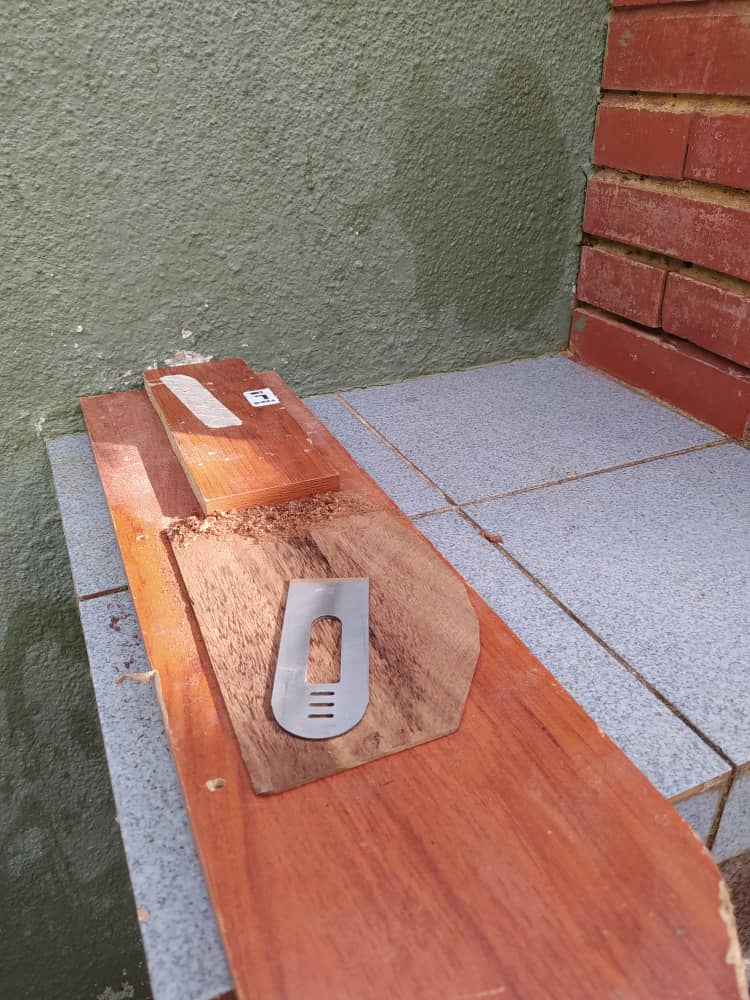  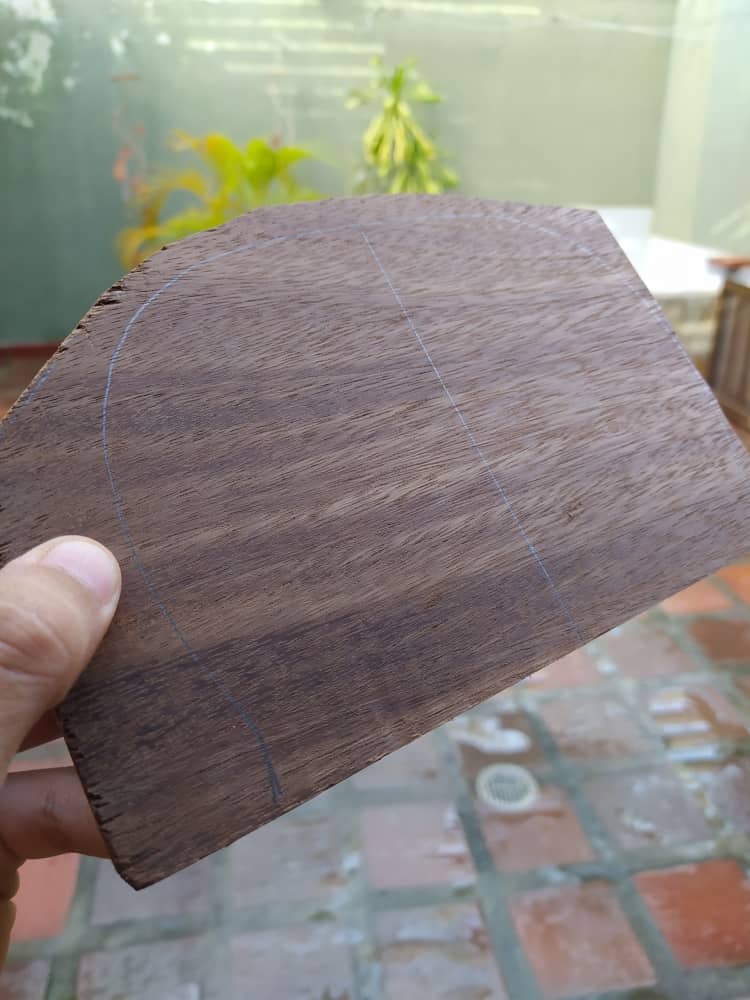 Time to shape the reinforcements of the back. With a chisel patience a steady pulse and markings, this job is easy enough, but it takes time.
>Hora de dar forma a los refuerzo del fondo. Con un formón, pulso firme y marcas, esto es pan comido, pero requiere tiempo.
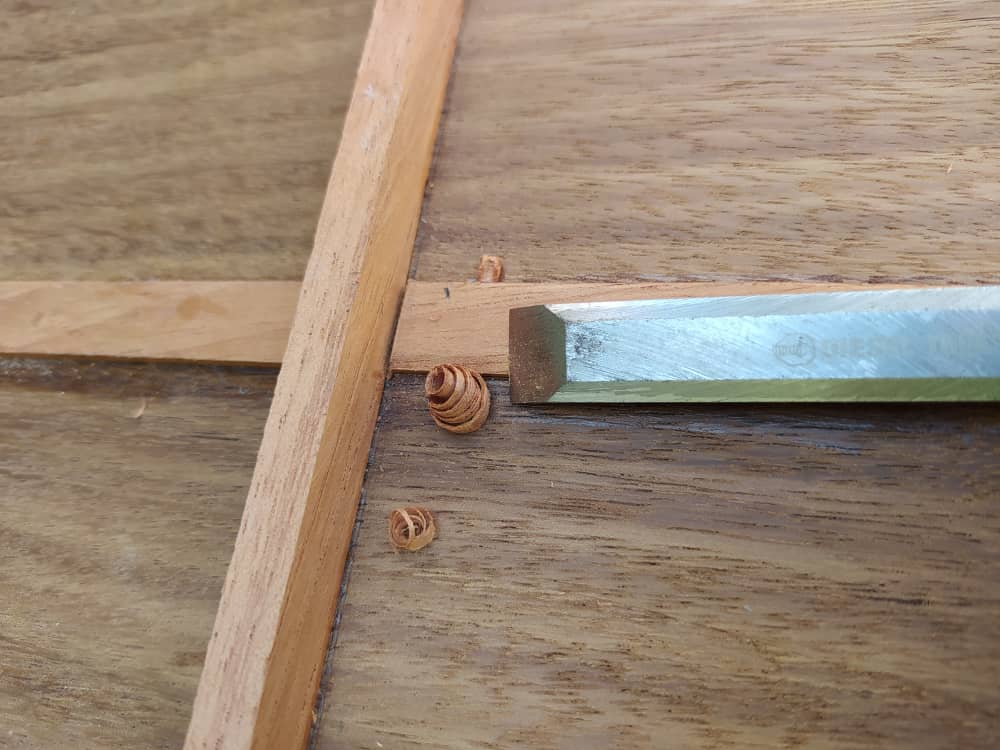  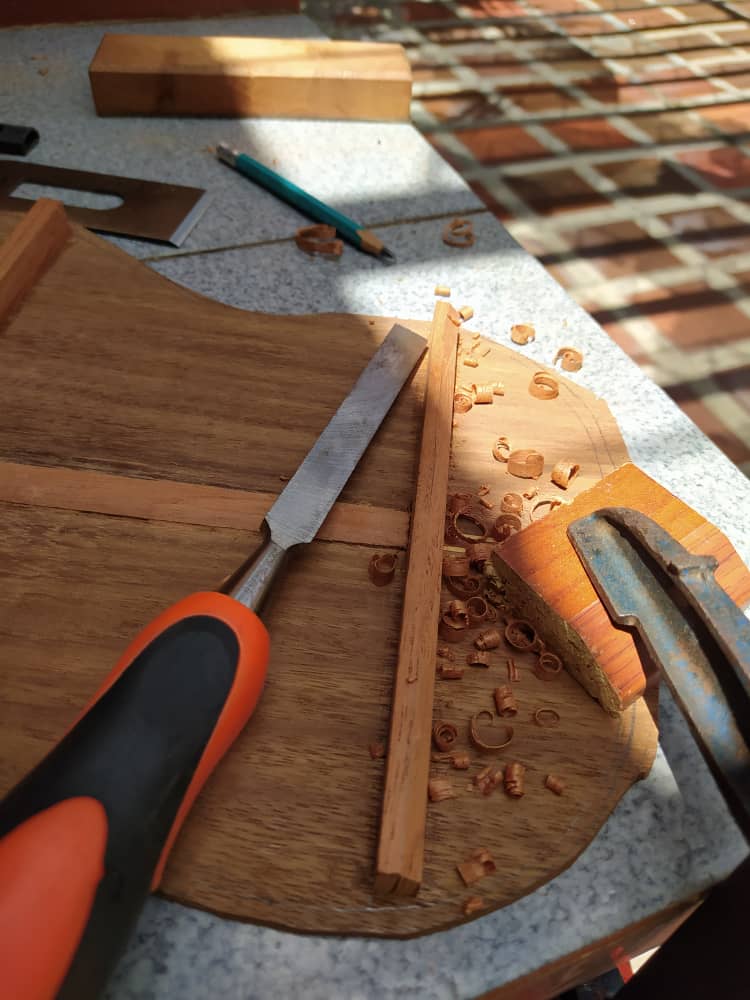 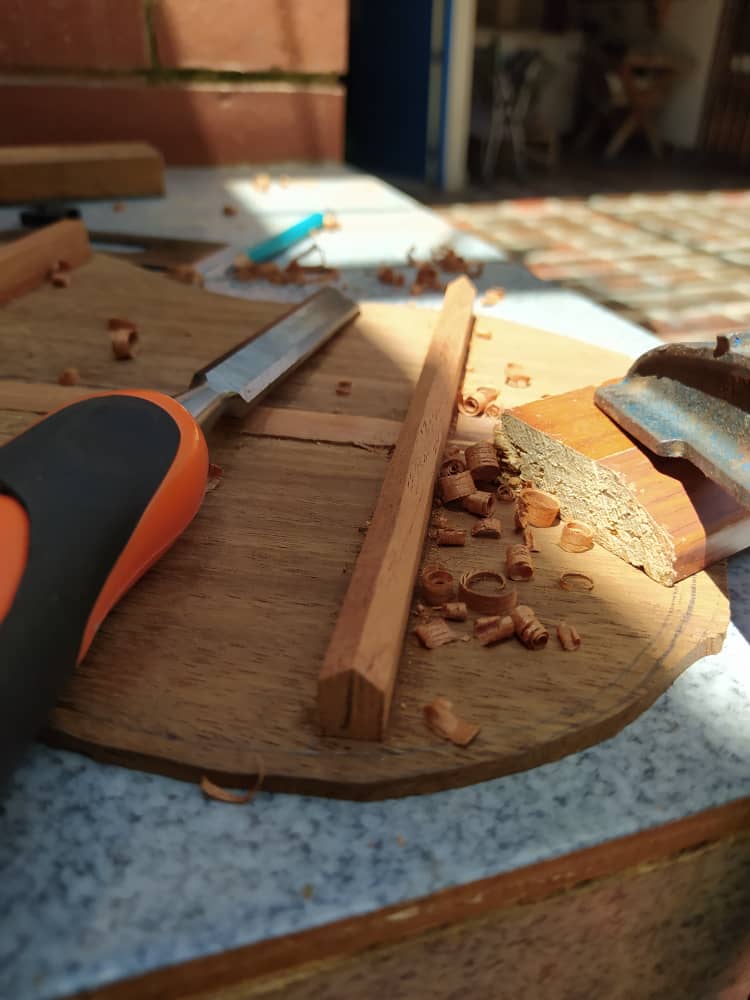  Last time we saw the sound board, it was barely on shape. Now, it's time to get the banks, struts, bridge reinforcement, strumming guard and carve the sound hole. This is done step by step. And it's delicate process. The struts are here to create the sound identity of the instrument.
>La última vez que vimos la tapa armónica apenas tenía forma. Ahora, es momento de colocar los bancos, varetas, refuerzo de puente, golpeador y abrir la boca. Esto se hace por partes. Y es un proceso delicado. Las varetas son las encargas de regular el sonido de este instrumento.
 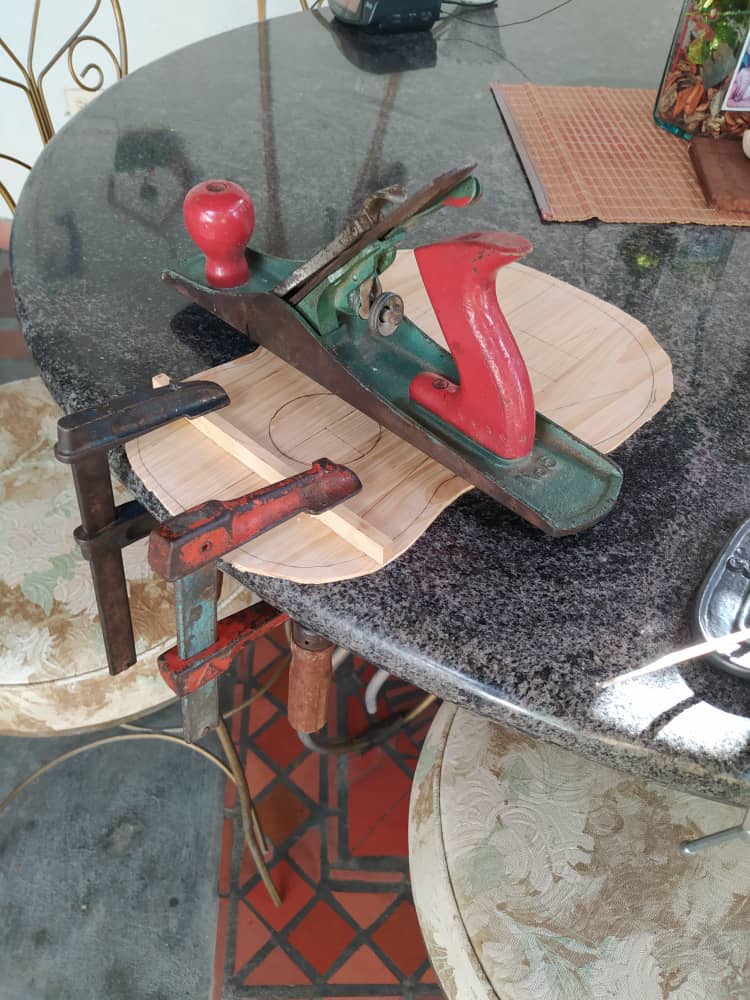 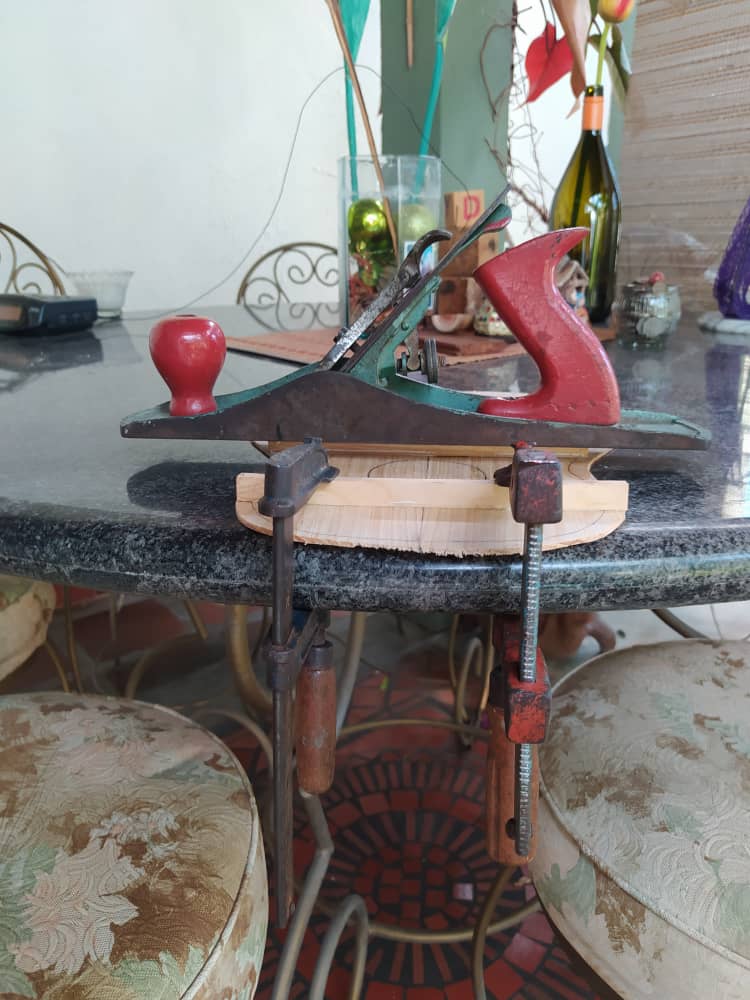 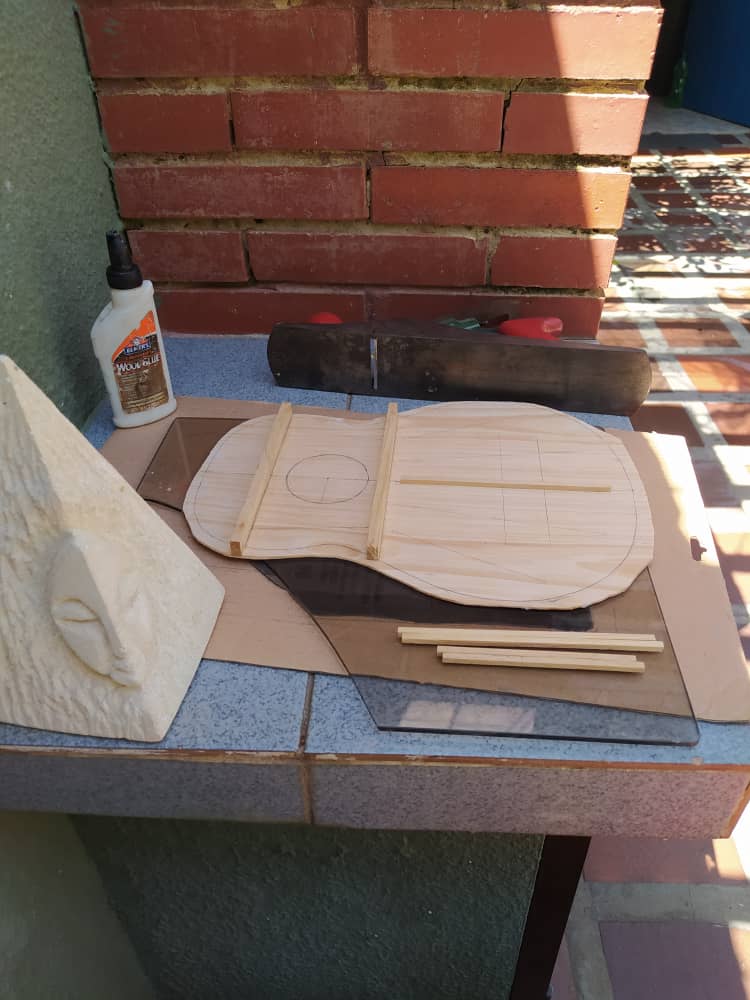 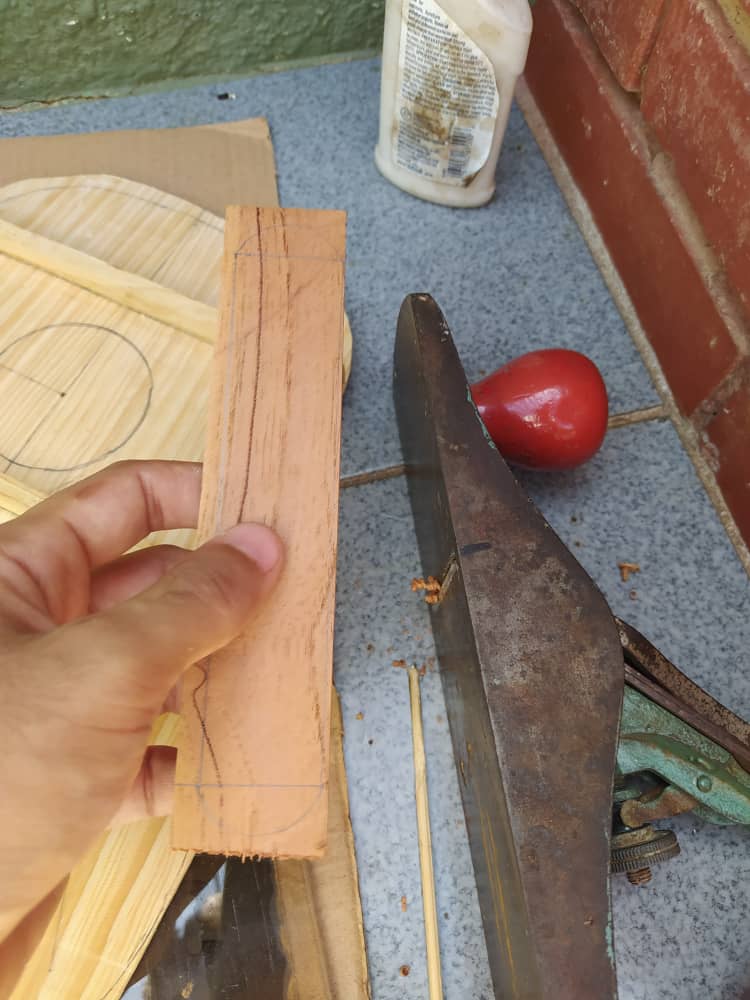 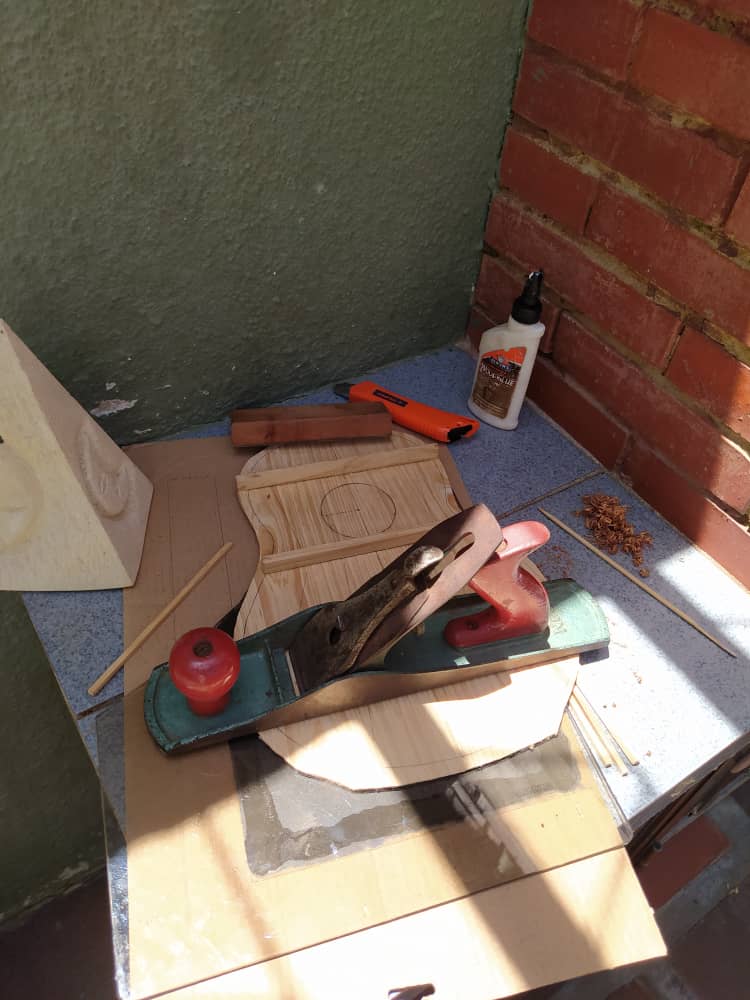 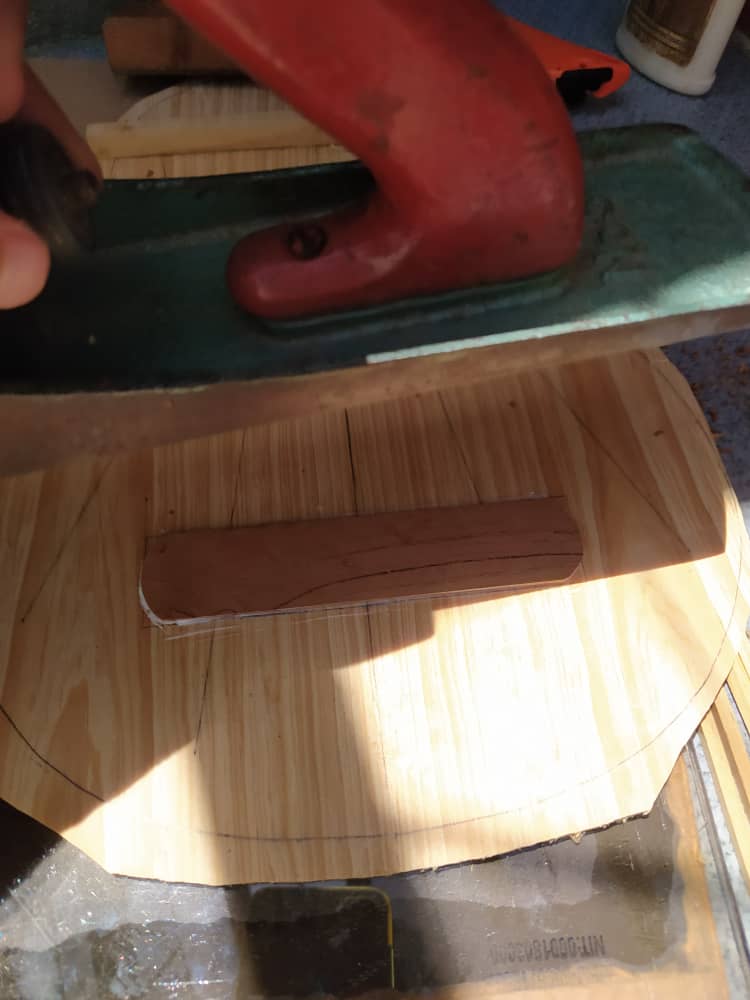  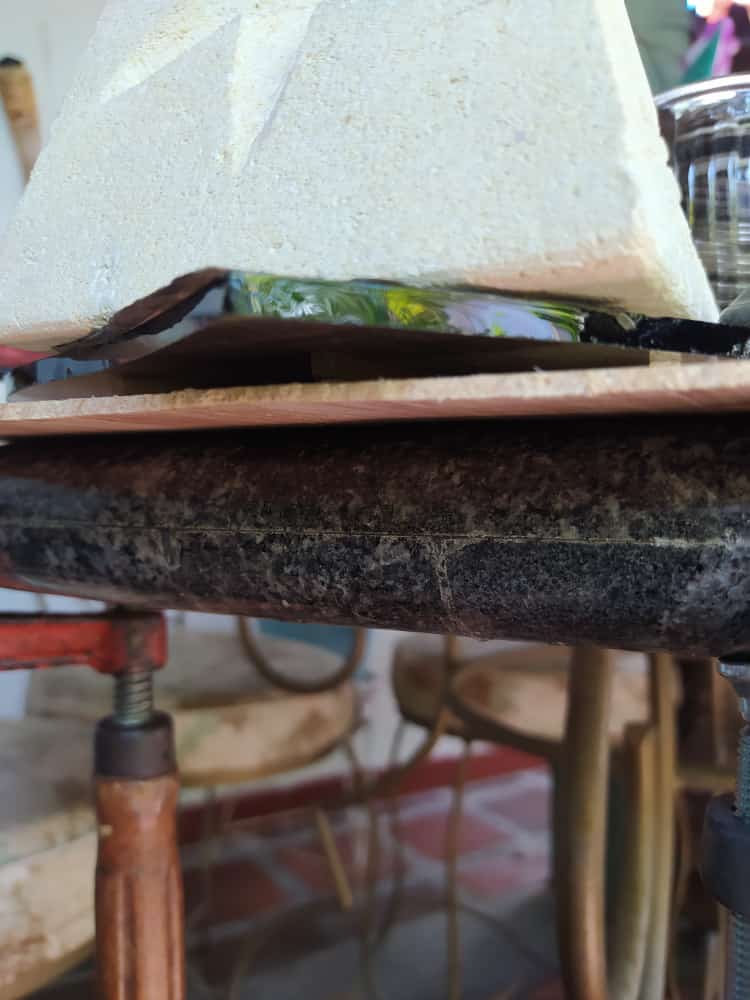 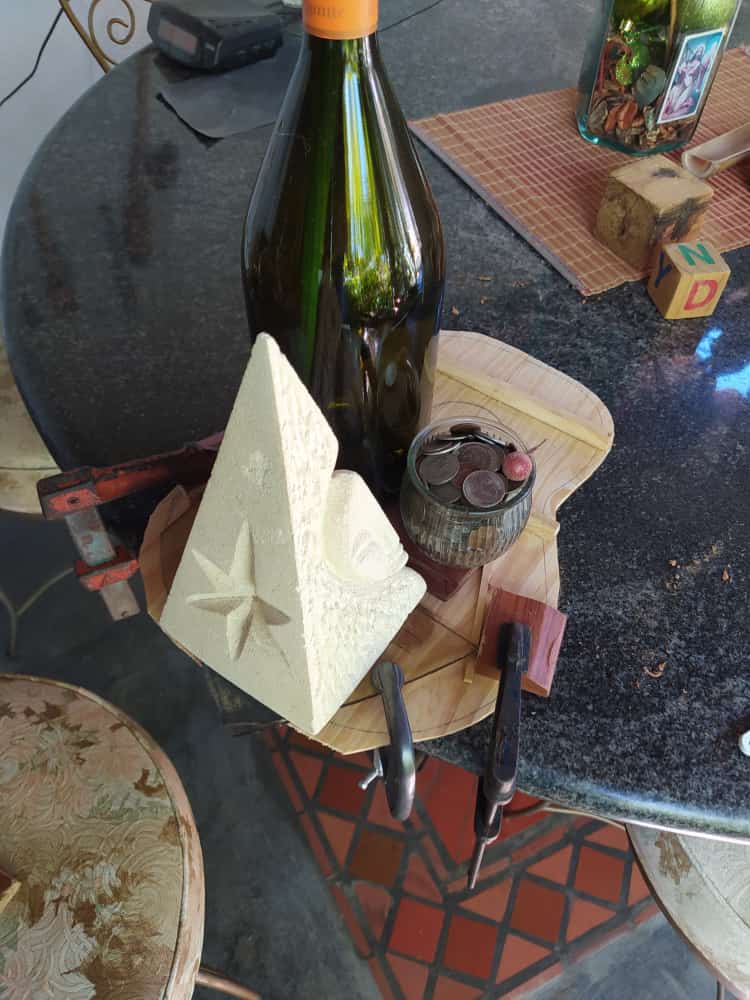  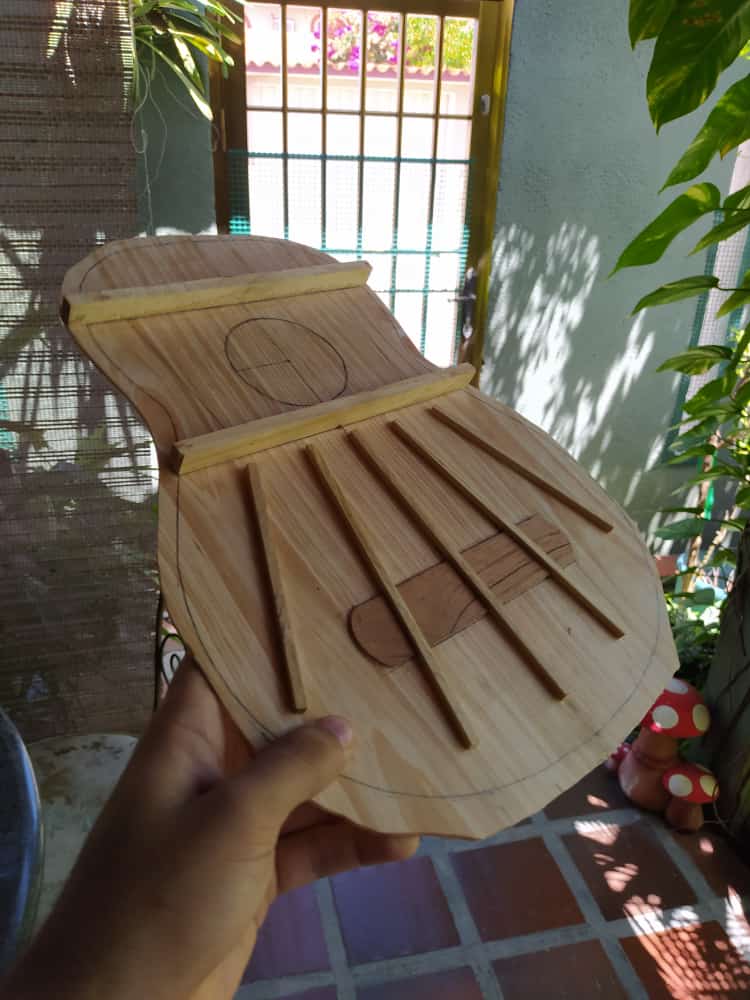 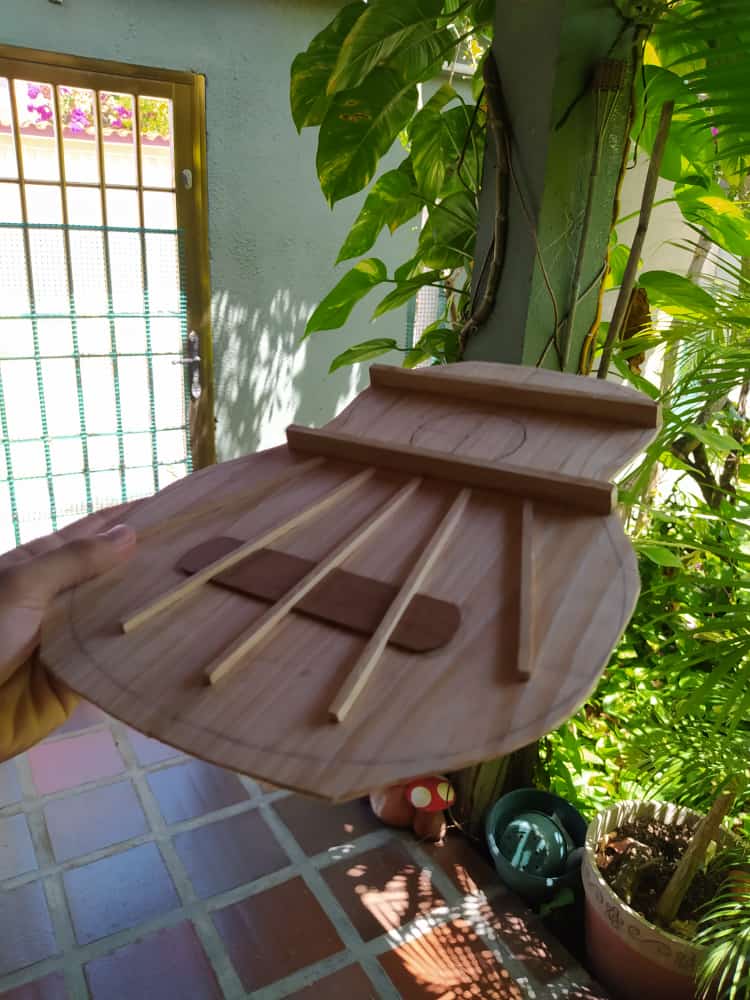 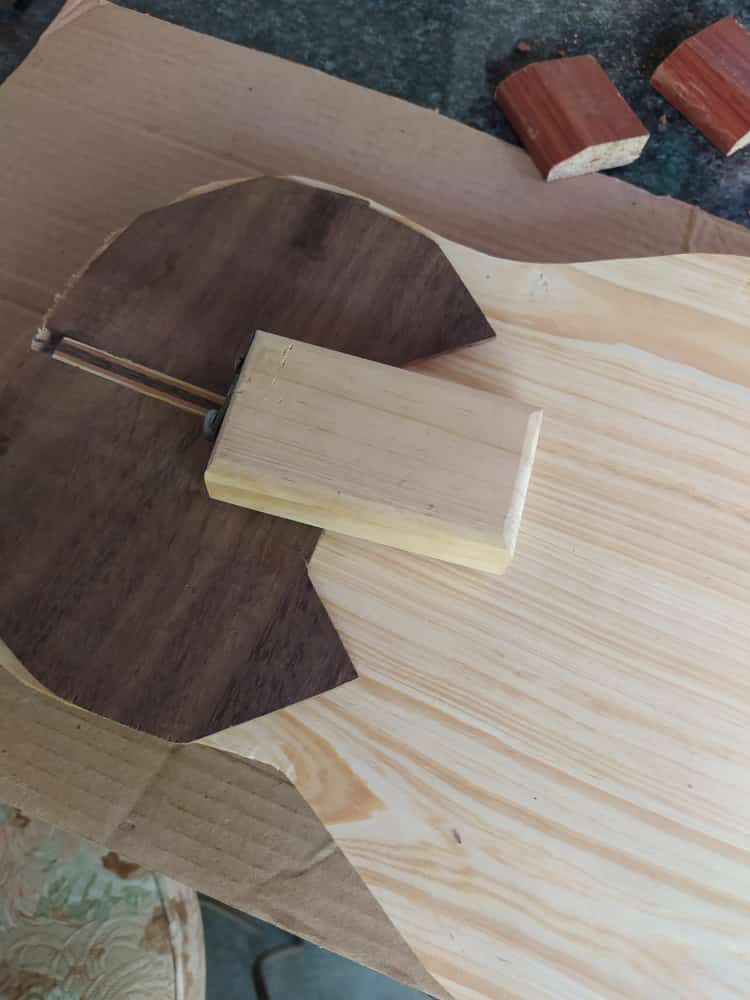  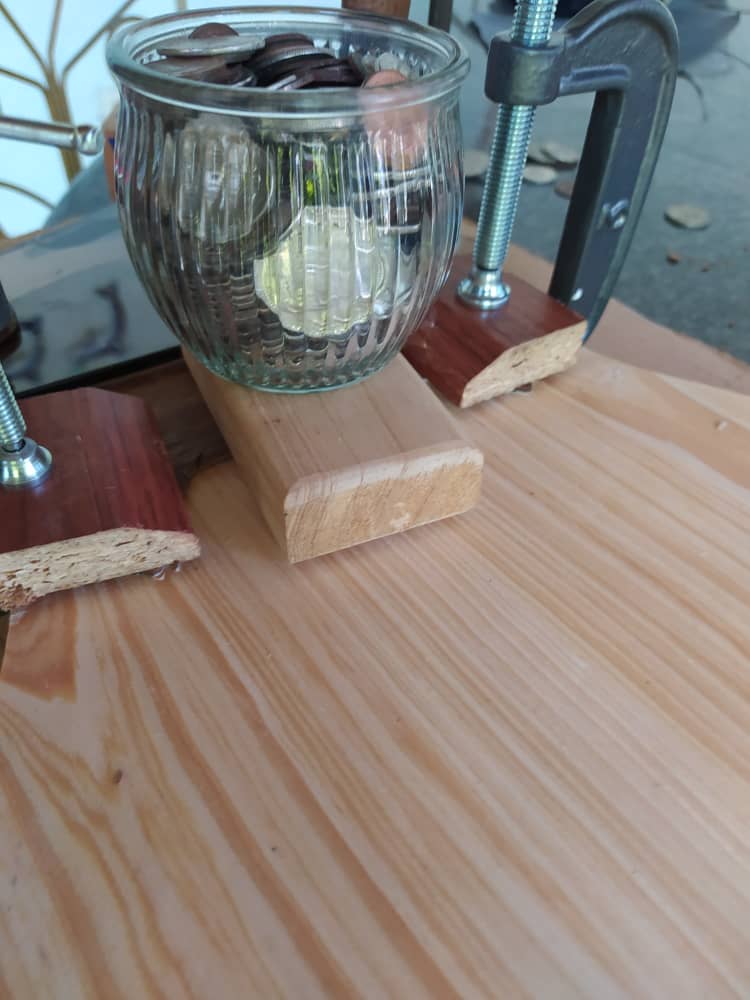 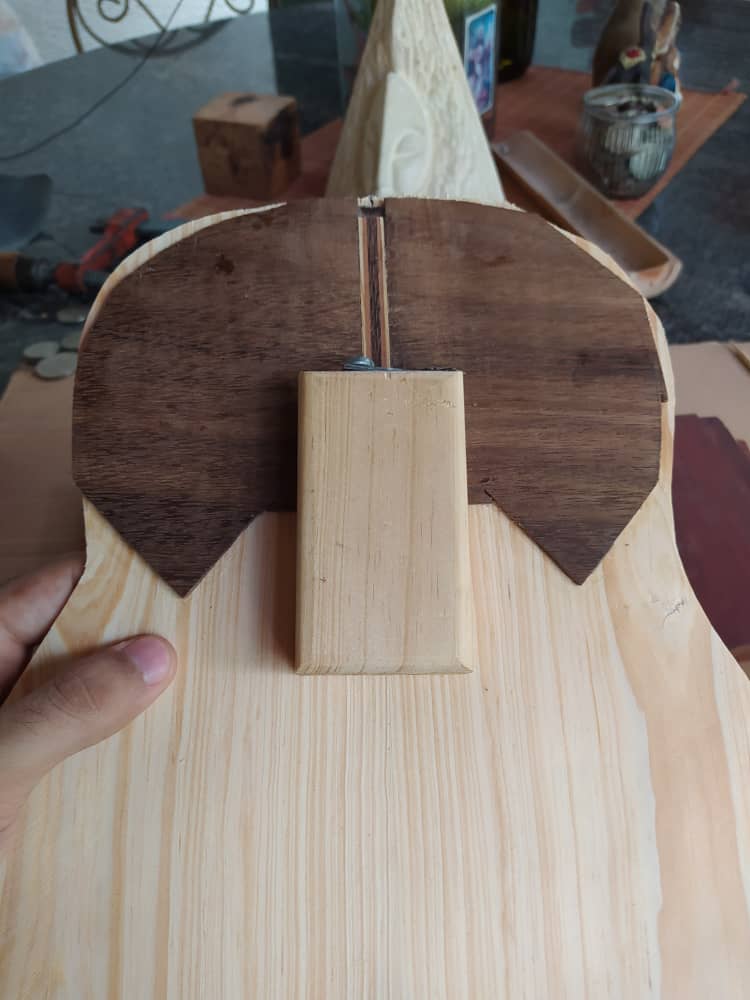 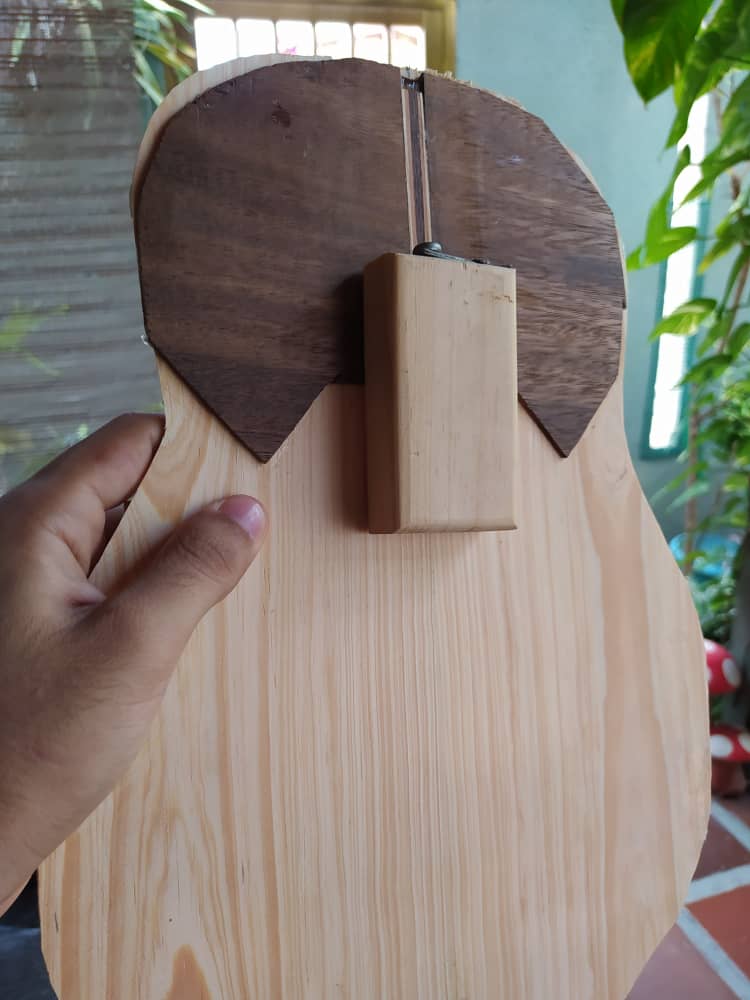 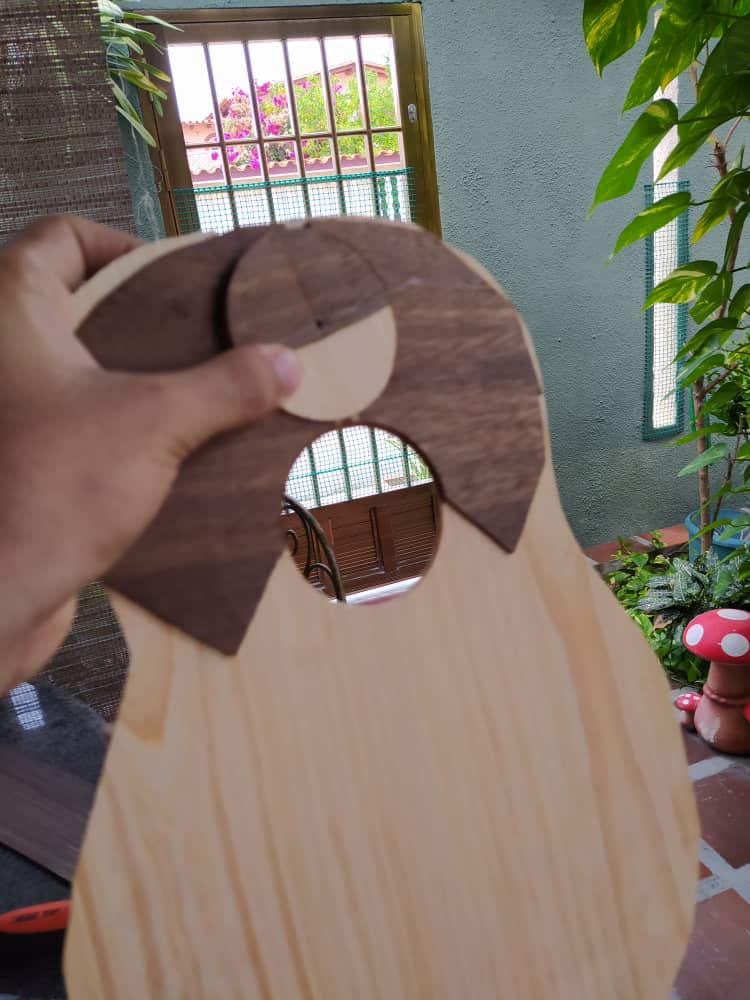 Once all these parts are on the sound board, it's time to shape the struts. Remember the structure of these pieces of wood regulates the treble and bass of the instrument. So, what we do carving them, is basically equalizing the sound. Pine is usually a high pitched wood. It's sound is bright and clear. In order to get a sound in the middle of the spectrum, we need to carve carefully.
>Después de tener todos los refuerzos en su lugar, es tiempo de trabajar las varas del abanico armónico. Esta estructura se encarga de regular los agudos y los bajos del instrumento. Labrarlas implica ecualizar el sonido. El pino es una madera de sonido agudo y brillante. Para llegar a un equilibrio en el sonido, hay que labrar el abanico con cuidado. 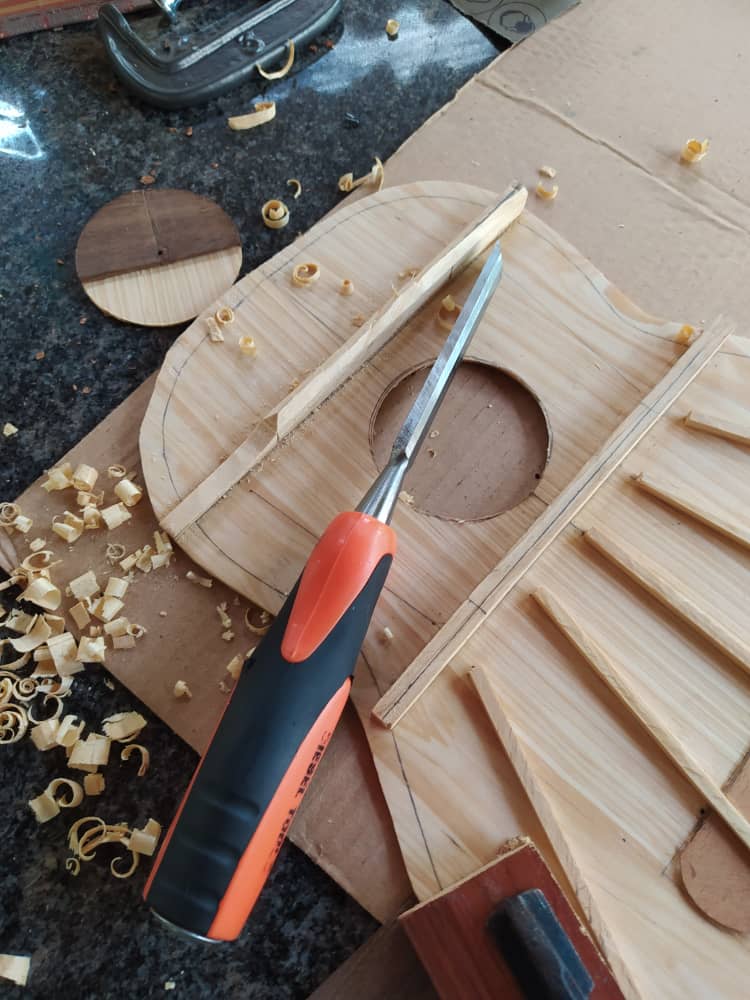 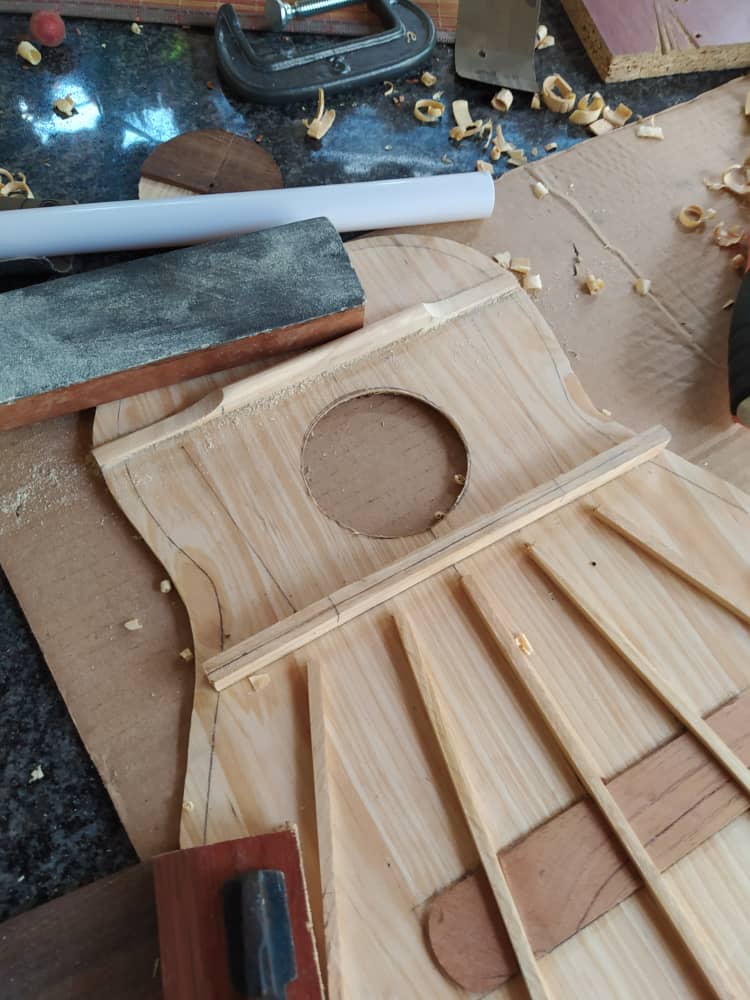 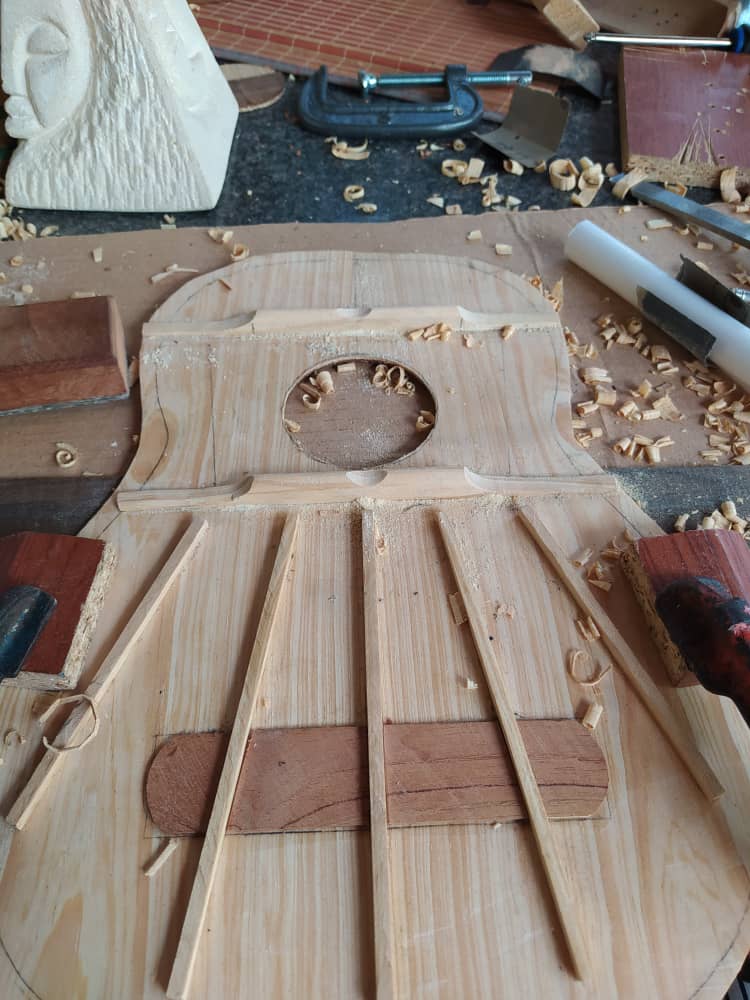 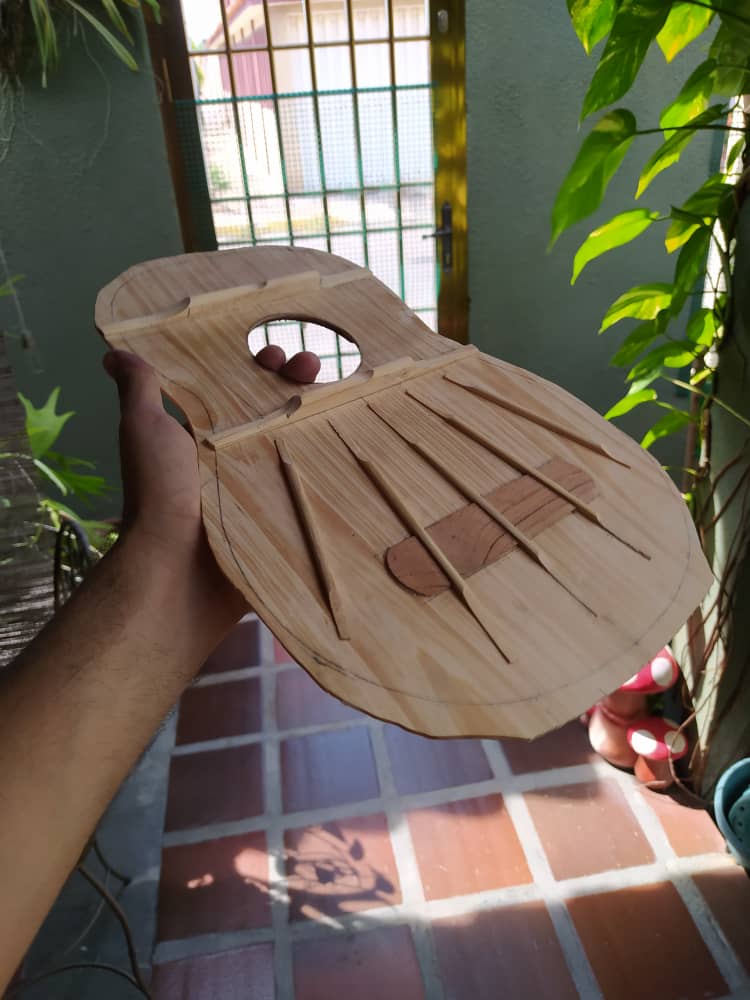 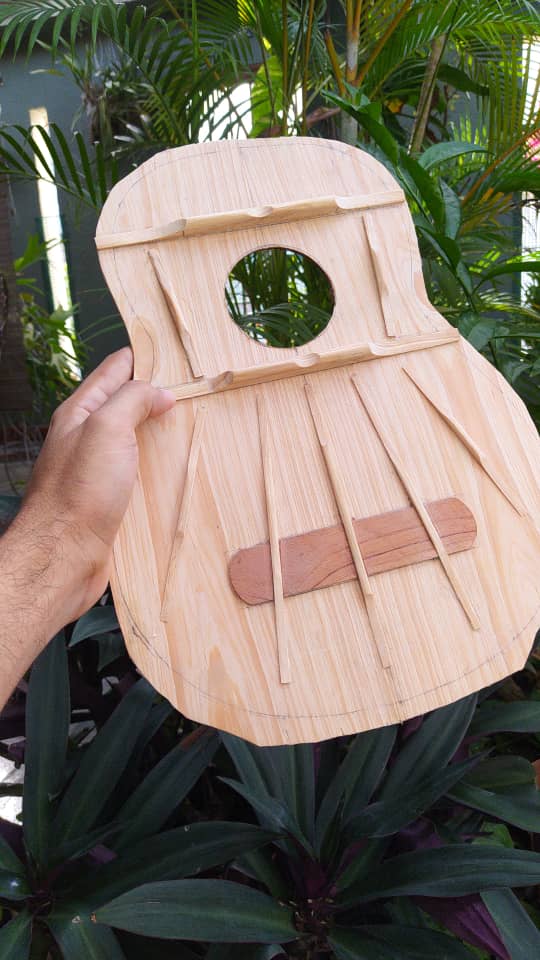 --- That is all for this entry. Thanks a lot for reading. See you in the next chapter. >Eso es todo por esta ocasión. Gracias por leer. Nos vemos en el próximo post. All the pictures used in these post were taken with my phone. >Todas las fotos en este post fueron tomadas con mi teléfono.
¡Es hora de trabajar! --- A post dedicated to the sound board, and a bit to other parts. >Una publicación dedicada a las tapa armónica y para otros detalles.
The first step is to get the strumming guard ready. It's easy enough. Remove excess material with this plane's blade and then get the mold in place.
>El primer paso es tener listo el golpeador. Es fácil. Se remueve el exceso con la hoja de cepillo y se marca la plantilla.
   Time to shape the reinforcements of the back. With a chisel patience a steady pulse and markings, this job is easy enough, but it takes time.
>Hora de dar forma a los refuerzo del fondo. Con un formón, pulso firme y marcas, esto es pan comido, pero requiere tiempo.
     Last time we saw the sound board, it was barely on shape. Now, it's time to get the banks, struts, bridge reinforcement, strumming guard and carve the sound hole. This is done step by step. And it's delicate process. The struts are here to create the sound identity of the instrument.
>La última vez que vimos la tapa armónica apenas tenía forma. Ahora, es momento de colocar los bancos, varetas, refuerzo de puente, golpeador y abrir la boca. Esto se hace por partes. Y es un proceso delicado. Las varetas son las encargas de regular el sonido de este instrumento.
                   Once all these parts are on the sound board, it's time to shape the struts. Remember the structure of these pieces of wood regulates the treble and bass of the instrument. So, what we do carving them, is basically equalizing the sound. Pine is usually a high pitched wood. It's sound is bright and clear. In order to get a sound in the middle of the spectrum, we need to carve carefully.
>Después de tener todos los refuerzos en su lugar, es tiempo de trabajar las varas del abanico armónico. Esta estructura se encarga de regular los agudos y los bajos del instrumento. Labrarlas implica ecualizar el sonido. El pino es una madera de sonido agudo y brillante. Para llegar a un equilibrio en el sonido, hay que labrar el abanico con cuidado.      --- That is all for this entry. Thanks a lot for reading. See you in the next chapter. >Eso es todo por esta ocasión. Gracias por leer. Nos vemos en el próximo post. All the pictures used in these post were taken with my phone. >Todas las fotos en este post fueron tomadas con mi teléfono.